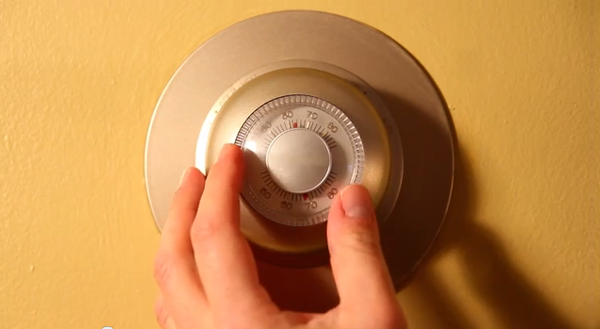EPA Releases Videos for Fighting Climate Change In Your Daily Life

The U.S. Environmental Protection Agency (EPA) seems to be taking its responsiblities as America's climate agency a bit more seriously than in years past, with today's release of a series of Public Service Announcement videos on everyday actions that work to slow down climate change.
The agency's new "Act On Climate Change" series of videos, released today on YouTube, is short on technical detail, which may frustrate some more wonkish climate change activists. That's by design. The videos, which range in length from 15 seconds to a bit more than a minute, are aimed at those of us who haven't devoted the bulk of our waking lives to worrying about the issue of greenhouse gas emissions.
With topics ranging from domestic life to work to road trips, and tips running the gamut from recycling and composting to maintaining proper tire inflation, the videos offer a wide range of ways in which people can cut their own greenhouse gas footprints by increment.
Here's one of the videos, on a topic that's near and dear to ReWire's heart:
Other tips include cutting down on water use (it takes energy to transport and purify the stuff), staying calm in traffic (jackrabbit starts waste gas) and keeping your thermostat set around 78 or so in the summer (which makes us laugh here at ReWire's Mojave Desert HQ, with our 84° minimum AC settings.)
The videos are well-suited for their intended audience, seemingly consisting of people who have always really meant to get around to recycling but haven't found the time. The tips in the videos are short on detail, but if a viewer's curiosity is piqued he or she can turn to the EPA's climate change website for more information.
It needs to be said that these tips, by themselves, won't solve the climate change problem even if everyone follows them diligently. Driving sensibly on your two-hour commute doesn't change the fact that you're driving a two-hour commute. The EPA's announcement of the video series hints at the biggest problem with the PSAs, saying "The new video series supports the President's Climate Action Plan by encouraging American families to reduce the amount of energy they consume, cutting down on their utility bills and protecting people's health."
That Climate Action Plan includes funding for Clean Coal and the administration's "All Of The Above" energy policies. Having an arm of that same Obama administration reminding householders that they ought to swap out incandescent light bulbs with LEDs may seem a bit like greenwashing.
Then again, given that each of the tips in the videos is likely to save householders and small businesses money, it's hard to argue against them. The worst-case scenario would seem to be that the videos might influence people to improve their standards of living and reduce their impact on the environment, as this cartoon that's making the rounds for the last few years would have it, "for nothing."


